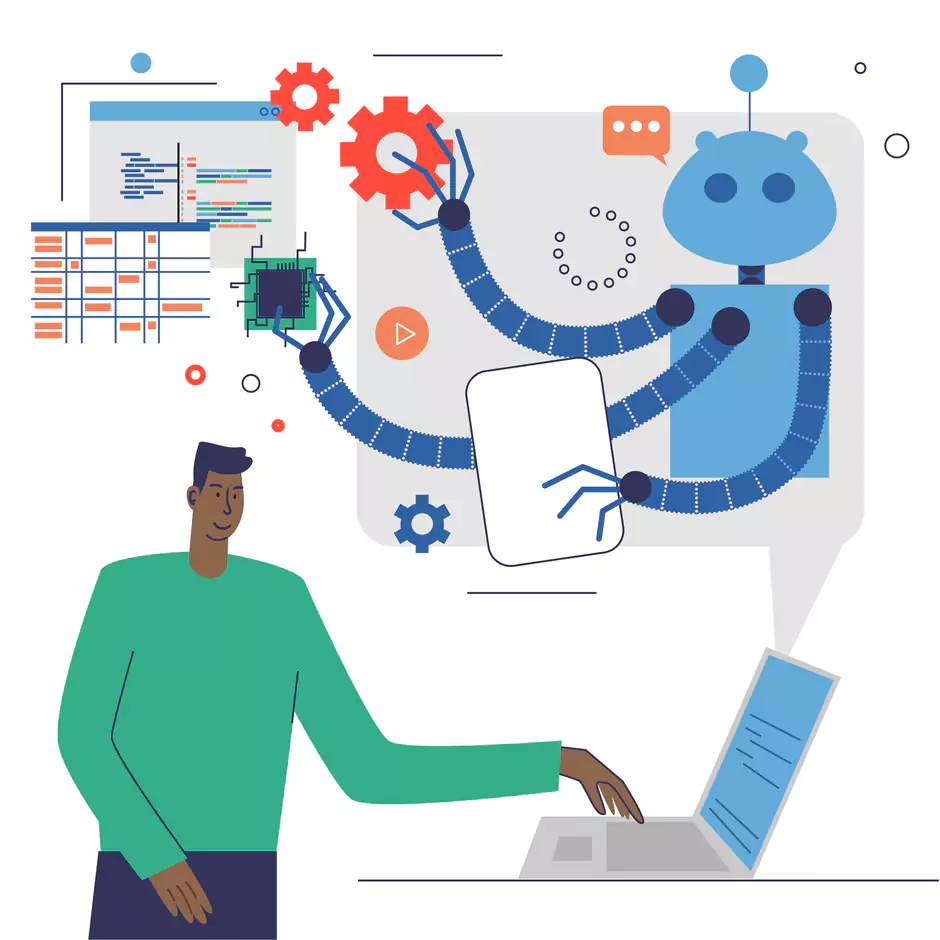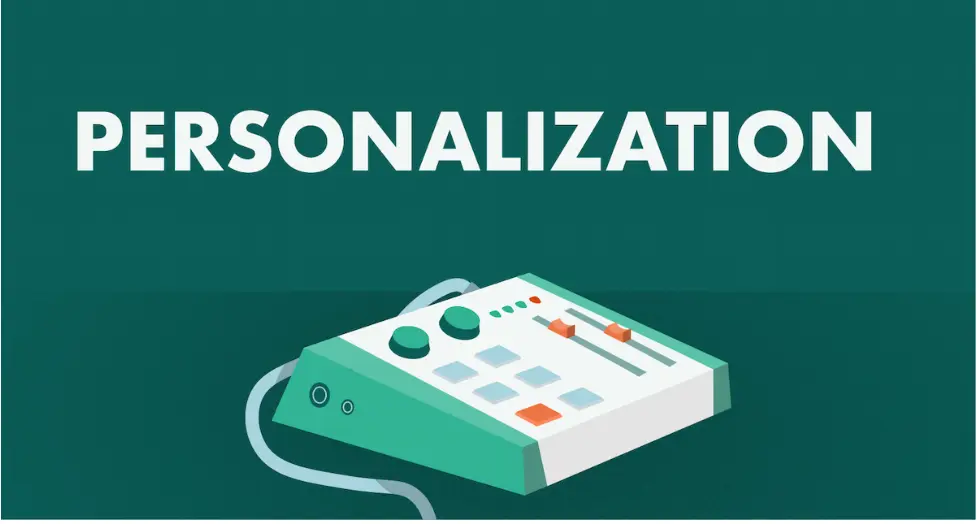What is ChatGPT?
ChatGPT is an AI-powered chatbot that uses Natural Language Processing (NLP) to communicate with users and provide assistance in a conversational manner. It is based on the GPT-3.5 architecture, a state-of-the-art language model trained on a massive amount of data to understand human language.
What is the need for ChatGPT?
ChatGPT is important because it enables businesses to automate their customer service and support functions, reducing the need for human intervention. This can lead to cost savings, improved efficiency, and better customer experience. ChatGPT can also be used in other applications, such as AI chatbots, personalization and content creation
How can ChatGPT help you?
ChatGPT can assist in various ways, depending on your needs, like:
- Information Retrieval: Quickly find and summarize information from numerous sources.
- Homework Help: Aid with solving problems, understanding concepts, and providing explanations.
- Content Creation: Generate ideas, drafts, and edits for articles, stories, and reports.
- Coding Assistance: Debug code, write scripts, and explain programming concepts.
- Language Learning: Practice conversations, translate text, and explain grammar rules.
- Planning and Organizing: Help with scheduling, task management, and goal setting.
- Creative Writing: Provide inspiration and suggestions for writing projects.
- Customer Support: Simulate customer service interactions and troubleshoot common issues.
Writing Clear and Effective Prompts
To get the most out of ChatGPT, it's important to write clear and effective prompts that provide the AI with the information it needs to generate an accurate response. Here's a guide on how to write clear and effective prompts:
Things to Follow For Writing Effective ChatGPT Prompts
Here's a guide on how to write clear and effective prompts:
Be specific: Provide as much detail as possible about the information you seek.
Use simple language: Avoid technical terms or jargon that ChatGPT may not understand.
Ask open-ended questions: Rather than asking yes or no questions, ask questions encouraging a more detailed response.
Use proper grammar and punctuation: This helps ChatGPT better understand your question.
Be concise: Keep your prompts short and to the point.
Generic Prompts
Here are some generic prompts that you can use to get started with ChatGPT:
What is the definition of [insert term]?
How do I [insert task]?
What are some tips for [insert task]?
What are the benefits of [insert action]?
What are the risks of [insert action]?
What is the difference between [insert two terms]?
How can I improve my [insert skill]?
What are some resources for learning [insert topic]?
What are the best practices for [insert action]?
What are some common mistakes to avoid when [insert action]?
What are the trends in [insert industry]?
What are the latest developments in [insert field]?
How can I [insert action] on a budget?
What are the top [insert number] [insert industry] companies?
How can I prepare for [insert event]?
What are some strategies for [insert action]?
What are the pros and cons of [insert action]?
How do I troubleshoot [insert problem]?
What are some tools for [insert action]?
How can I save time when [insert task]?
What are some effective ways to [insert action]?
How do I stay motivated when [insert task]?
How do I stay organized when [insert task]?
What are some common misconceptions about [insert topic]?
What are some benefits of using [insert tool]?
What are some alternatives to [insert tool]?
How can I measure [insert metric]?
What are some strategies for increasing [insert metric]?
How can I create [insert content] that resonates with my audience?
What are some common challenges faced by [insert industry] professionals?
What are some strategies for overcoming [insert challenge]?
What are some ways to network in [insert industry]?
How do I prepare for a [insert event] interview?
How can I negotiate my [insert industry] salary?
What are some best practices for [insert action] in [insert industry]?
Key Terms and Definitions
There certain key terms that has uses in ChatGPT, like:
Artificial Intelligence (AI)

Artificial Intelligence, or AI, refers to the simulation of human intelligence in machines that are programmed to perform tasks that normally require human intelligence, It includes things such such as learning, reasoning, perception, and decision-making.
AI uses a range of techniques, including machine learning, natural language processing, and computer vision, to enable machines to learn from experience and improve their performance over time. ChatGPT is an example of AI technology that uses natural language processing and machine learning to generate human-like responses to text-based input.
Natural Language Processing (NLP)

Natural Language Processing, or NLP, is a subfield of AI that focuses on enabling computers to understand, interpret, and generate human language.
Natural Language Processing algorithms use statistical models and machine learning techniques to analyze and interpret large amounts of text data. Thus allowing machines to understand human language and respond in a natural and meaningful way.
ChatGPT relies on Natural Language Processing techniques to analyze and interpret input text, generate responses, and improve its performance over time.
Machine Learning (ML)

Machine Learning, or ML, is a subset of AI that involves training machines to learn from data and improve their performance over time without being explicitly programmed.
Machine Learning algorithms use statistical models to analyze and interpret data. Thus allowing machines to identify patterns and make predictions based on those patterns.
ChatGPT uses machine learning techniques to analyze and learn from large amounts of text data. It uses Machine Learning to generate more accurate and contextually relevant responses.
Deep Learning
Deep Learning is a subset of machine learning that involves training neural networks with multiple layers of interconnected nodes to learn from data and improve their performance over time.
Deep Learning algorithms use complex neural network architectures to analyze and interpret data, enabling machines to identify and learn from complex patterns in large datasets. ChatGPT uses deep learning techniques to analyze and interpret text data, enabling it to generate more accurate and contextually relevant responses.
Neural Networks
Neural Networks are a type of machine learning algorithm inspired by the structure and function of the human brain.
Neural Networks consist of layers of interconnected nodes that process and analyze data to identify patterns and make predictions. ChatGPT uses neural network architectures to analyze and interpret text data, enabling it to generate more accurate and contextually relevant responses.
GPT-3.5
GPT-3.5 is an AI language model developed by OpenAI, based on the GPT-3 architecture. It is a state-of-the-art language model that is capable of generating human-like responses to text-based input.
ChatGPT is an example of an application that uses the GPT-3.5 model to generate responses to user input. GPT-3.5 is trained on a vast corpus of text data, enabling it to generate highly accurate and contextually relevant responses to a wide range of input.
How ChatGPT Works
Training Process
ChatGPT is an artificial intelligence (AI) language model that is trained on a large corpus of text data. During the training process, the model analyzes the patterns and relationships within the text to learn how to generate human-like responses to various prompts. The training data used for ChatGPT is sourced from various sources, including news articles, books, and online forums.
Language Modeling
Language modeling predicts the probability of a sequence of words occurring in a given context. In the case of ChatGPT, the model is trained to predict the next word in a sentence based on the preceding words. This process enables the model to generate coherent and contextually relevant responses to user prompts.
Text Generation
Text generation uses an AI language model to produce new text based on a given input. In the case of ChatGPT, the model generates text by using the patterns and relationships it has learned during the training process to predict the most likely sequence of words to follow a given prompt.
Applications of ChatGPT
ChatGPT has many applications, including chatbots, language translation, and content generation.AI chatbots, like BotPenguin can provide more personalized and contextually relevant responses to user queries, improving the overall user experience. ChatGPT can also be used for language translation, enabling users to communicate with others in different languages more easily. Additionally, ChatGPT can be used for content generation, enabling marketers to create high-quality content quickly and efficiently.
Key Benefits of ChatGPT
The benefits of ChatGPT are the following:
Increased Efficiency

One of the most significant benefits of ChatGPT is its ability to improve efficiency in various industries. With ChatGPT, businesses can automate various processes, including customer support, which can reduce the workload on employees and enable them to focus on more complex tasks. ChatGPT's ability to generate human-like responses also means that it can handle multiple customer queries simultaneously, Thus leading toleading to faster response times and an overall increase in efficiency.
Improved Customer Experience
ChatGPT can also provide an improved customer experience by offering personalized responses and recommendations to customers. ChatGPT's natural language processing capabilities can quickly understand customer queries and respond with relevant information. This can lead to better engagement, improved customer satisfaction, and increased customer loyalty.
Personalization

ChatGPT can also be customized to suit the unique needs of a business. With the ability to train the AI model on specific datasets, businesses can ensure that ChatGPT provides personalized responses that align with their brand's values and tone. ChatGPT can also use customer data to provide personalized recommendations, which can increase the likelihood of a customer making a purchase.
Cost Savings
ChatGPT can help businesses save costs in various ways. By automating customer support, businesses can reduce their reliance on human operators, which can lead to cost savings. Additionally, ChatGPT can handle a high volume of customer queries simultaneously, saving business time and money. ChatGPT's ability to provide personalized recommendations can also lead to increased customer engagement and higher sales.
ChatGPT vs. Other Chatbots
Rule-Based Chatbots
Rule-Based chatbots use pre-defined rules and decision trees to provide responses to user queries. Rule-based chatbots are limited in their capabilities as they can only respond to specific questions and phrases they have been programmed to understand. They do not have the ability to understand natural language, which can lead to frustrating user experiences when the user's query does not match the programmed response.
Retrieval-Based Chatbots
Retrieval-Based chatbots use a database of pre-defined responses to provide answers to user queries. They rely on keyword matching to identify the most relevant response to the user's question. Retrieval-based chatbots have more flexibility than rule-based chatbots as they can provide responses to a wider range of queries. However, they still lack the ability to understand the context and generate original responses.
Generative Chatbots
Generative chatbots use deep learning models, such as neural networks, to generate responses to user queries. They can understand natural language and generate original responses but require large amounts of training data to perform well. Generative chatbots like ChatGPT are more flexible and can handle a wider range of queries than rule-based and retrieval-based chatbots. They can also provide more personalized and engaging user experiences.
Suggested REading: Generative AI
Frequently Asked Questions(FAQs)
What is ChatGPT, and how does it work?
ChatGPT is a generative pre-trained transformer model developed by OpenAI, designed to generate human-like text based on given prompts. It utilizes deep learning techniques and large-scale training data to understand context, generate responses, and maintain conversation flow.
What are the applications of ChatGPT?
ChatGPT has various applications, including AI chatbots, content generation, programming assistance, language translation, and creative writing. Due to its versatility in generating context-aware text, it can be used in customer support, marketing, entertainment, and more.
What is the difference between ChatGPT and traditional chatbots?
While traditional chatbots rely on predefined rules and limited contextual understanding, ChatGPT uses advanced natural language understanding and generation techniques to provide more context-aware, coherent, and human-like responses, enabling more complex and engaging interactions.
How can developers integrate ChatGPT into their projects?
Developers can integrate ChatGPT into their projects using OpenAI's API, which allows them to access and utilize the model's capabilities in their applications. They can follow the API documentation for guidance on implementing and customizing the ChatGPT model.
Are there any limitations or concerns when using ChatGPT?
Some limitations of ChatGPT include occasional generation of incorrect or nonsensical responses, sensitivity to input phrasing, verbosity, and potential biases in the training data. Developers should be mindful of these limitations and consider implementing additional safety measures to ensure appropriate use.


